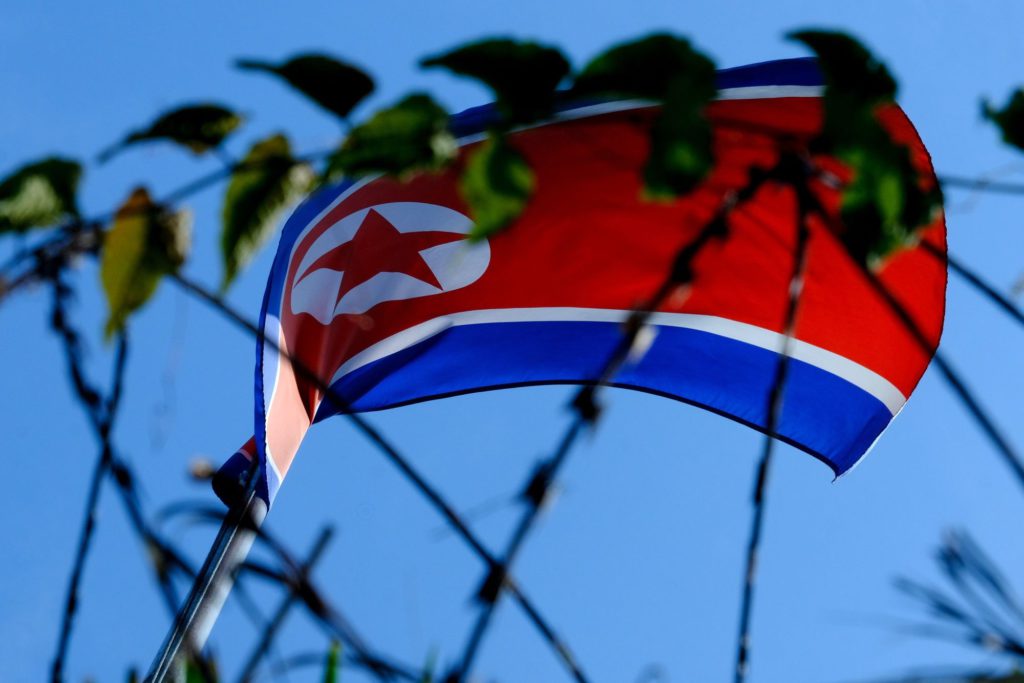North Korea said it carried out the final tests of a military spy satellite, publishing a pair of black-and-white overhead images of South Korea’s capital region in an attempt to show the device worked.
(Bloomberg) — North Korea said it carried out the final tests of a military spy satellite, publishing a pair of black-and-white overhead images of South Korea’s capital region in an attempt to show the device worked.
The country announced the breakthrough via state media Monday, a day after South Korea said its rival lobbed at least two suspected medium-range ballistic missiles through space and into the sea.
While North Korea described a single rocket launch with a similar flight path Sunday, it said the vehicle released a demonstration satellite carrying various cameras and transmitters.
The pictures released by the Korean Central News Agency covered much of Seoul and the adjacent port of Incheon and included an area where South Korean President Yoon Suk Yeol’s office is located.
They had a resolution of 20 meters, KCNA said, far less detailed than the 0.5 meters standard that experts say is typical for modern military applications.
“The technology looks like what South Korea had in the start of its satellite development in 1990s,” said Bang Hyo-choong, who teaches spacecraft flight dynamics and control at Korea Advanced Institute of Science and Technology.
“What’s important is how much they can zoom in and whether their technology is advanced enough to discern roads and buildings.”
The authenticity of the images couldn’t immediately be confirmed.
Leader Kim Jong Un has gone to great lengths to convince the world of his military achievements, apparently launching an older intercontinental ballistic missile earlier this year to pass off the failure of a new model as a success in a video.
North Korea has in the past used space activities to obscure the development of its nuclear missile program, because sending a satellite into space and lobbing a warhead to another continent relies on much the same technology.
Sunday’s rocket launch coincided with the 10th anniversary of Pyongyang’s test of its “Shining Star” Earth-observation satellite.
“That ended up a dud in orbit, so this photo shows how much the program and its launch capabilities have improved in the decade,” Martyn Williams, a fellow with the Washington-based Stimson Center think tank, said on Twitter.
The new satellite project is on track for completion in April, KNCA said, a month when North Korea often marks the birthday of its founder, Kim Il Sung, with parades and other displays of military might.
Kim has stepped up the development of his nuclear weapons program this year, launching a record number of ballistic missiles, while refusing US President Joe Biden’s overtures to resume talks.
American officials are concerned North Korea is seeking to develop an ICBM with multiple warheads in a bid to overwhelm missile defense systems.
Describing such tests as satellite launches could reduce pressure on China to take a stronger stand at the United Nations, where Washington has been urging Beijing and Moscow to support additional sanctions.
The two missiles South Korea said were launched Sunday were fired off from a site near the Sohae Satellite Launching Ground, where the regime also tested a new solid-fuel rocket engine last week.
Solid-fuel missiles are quicker to deploy and easier to hide, giving the US and its allies less time to see signs of a launch and prepare interceptors.
The reconnaissance satellite project North Korea’s National Aerospace Development Administration conducted was intended to “evaluate the capabilities of satellite photography and data-transmission system and ground-control system,” KCNA said.
The resolution of the photos North Korea released may seem low now, but Pyongyang wants to show that it’s capable of detecting signs of any preemptive strikes from allied bases, said Lim Eul-chul, a professor at Kyungnam University’s Institute for Far Eastern Studies in Seoul.
“They must have already taken shots of South Korea throughout, but it might look too explicit to release images of areas with military bases at the moment,” Lim said.
“That’s why they chose to unveil images of Seoul and other areas instead.”
–With assistance from Shinhye Kang and Seyoon Kim.
More stories like this are available on bloomberg.com
©2022 Bloomberg L.P.











